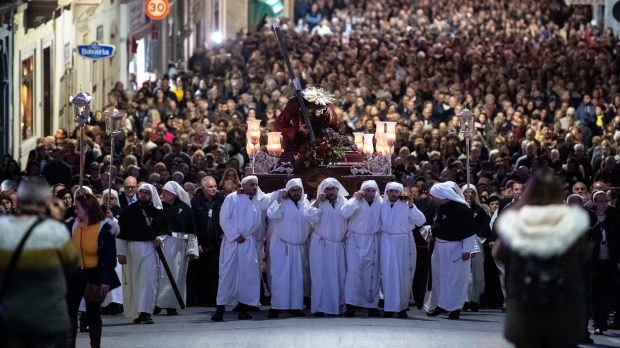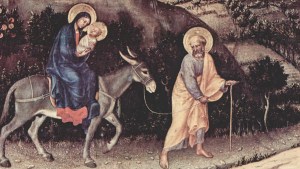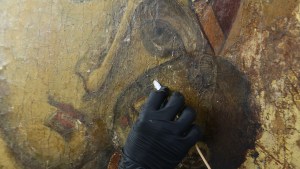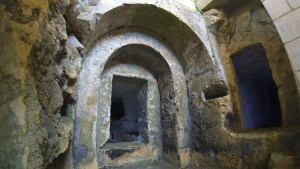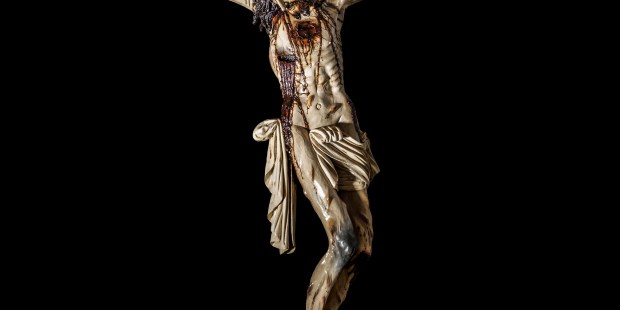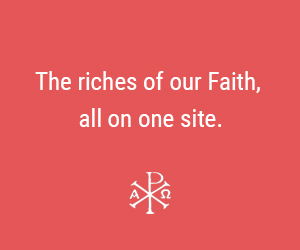It is a well-known fact that the New Testament says very little, almost nothing, about how Jesus looked. It doesn’t say anything about the looks of the apostles either. None of the four Gospels describes Jesus in detail. However, the Christian tradition has nevertheless represented him using different iconographic models. From the beardless and youthful “Alexandrine Christ,” based on classic Greek proportions and canons normally applied to sculpture, to the long-haired and bearded “Syrian Christ” following the Byzantine Empire’s custom, Christianity has always recognized in the image not only a liturgical, cultural related element but also an effective evangelization tool in a world where reading and writing were (and still are) not widespread skills. Here, we present you four exceptional images of Jesus, considered miraculous by thousands of believers and devotees, that you can find when visiting the Maltese archipelago.
Ta’ Giezu Crucifix, Valletta
Ta’ Ġieżu Crucifix is a mid-17th-century effigy that instills awe and wonderment on all those who set eyes upon it. All the constituent elements, such as sculpted wood, parchment, gesso and finishing, masterfully kneaded together by Frate Innocenzo’s deep-seated faith, manage to reach that elusive delicate stage between the sensual and the spiritual.
The crucifix was commissioned by Fra Marco Rosset, an Aragonese Knight of the Order of St John who was also a founding member of the Archconfraternity of the Holy Cross, whose main aim was to spread the devotion to this miraculous crucifix. The Sicilian Frate Innocenzo sculpted this crucifix in wood around 1646, possibly whilst residing for a short while in Malta. Being a Franciscan Friar, with close relationship to the Holy Land, made it possible for this early Baroque sculpture to find its place at the Franciscan Church of St Mary of Jesus, better known as Ta’ Ġieżu, in Valletta. Its dramatic character, exhibiting the harsh marks inflicted on Christ’s body during his Passion, make it a distinctive baroque image. Contrary to other crucifixes wherein Christ looks upwards, communicating with God the Father, Frate Innocenzo’s looks down, straight into the worshiper’s eyes, thus forging a strong devotional and emotional bond.
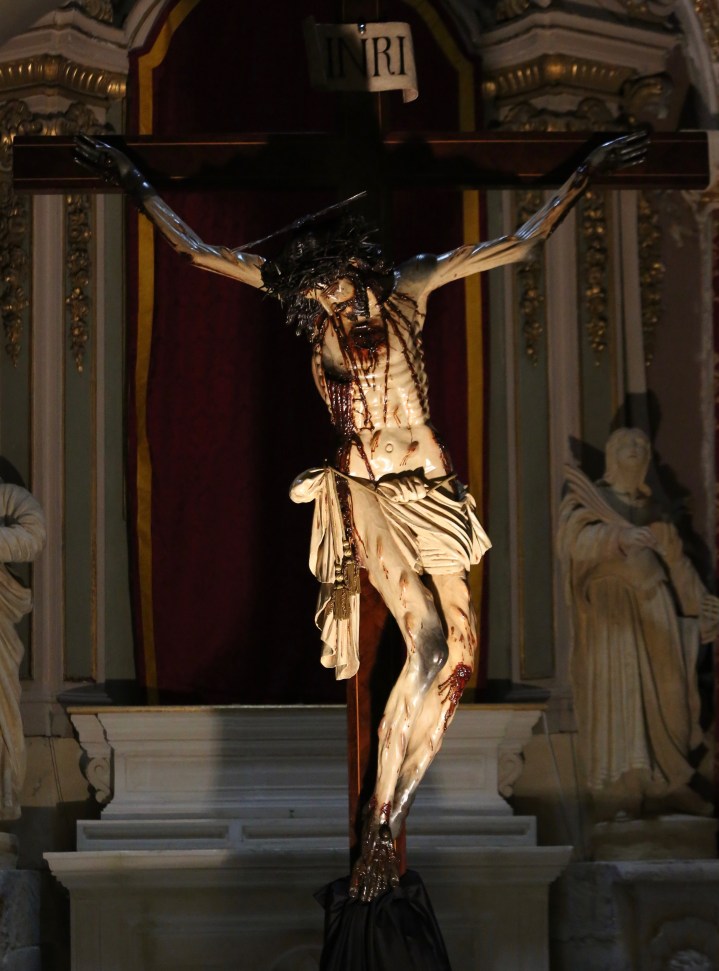
The artist used a particular terpentine resin called ceralacca to create the effect of thick, flowing blood. A beautiful symbolic analogy is that this material was used in the Middle Ages to seal important documents, so theologically this symbol might remind us that with His blood, Christ had sealed our salvation. Likewise, Frate Innocenzo makes use of parchment to produce a hyper-realistic rendition of loose skin around the wounds. Since parchment is typically made out of lamb’s skin, this might remind us of the Agnus Dei, which takes away our sins. The crown of thorns, made of woven, possibly vine, branches reminds the worshiper of the grapes and thus of the Sacrament of the Eucharist. All these symbols and the overall hyper-realistic imagery make for a riveting image that somehow suspends the disbelief of the devout worshiper into believing that this is Christ’s real body. And that is why for all these years this effigy has drawn the attention and devotion of many pilgrims.
The Crucifix of Ta’ Ġieżu is popularly called “The Miraculous Crucifix.” The reason is that it is definitely the most famous crucifix venerated in Malta. The devotion towards it is fruit of the popularity of the Franciscan church where it is venerated. A Franciscan historian of the 18th century, Fr. Giovanni Antonio Mercieca, states that the church of Ta’ Ġieżu was considered “as if it were everybody’s parish church.” The universality of this devotion in Malta is witnessed by the great number of devotees who for centuries have prayed in front of the crucifix. Indeed, the Maltese have always considered the crucifix so “miraculous” that just praying before the image means grace granted. Legends have also been born around this crucifix, indicating its “angelic” characteristics. During times of pestilence, drought and war, it was always the Crucifix of Ta’ Ġieżu that was taken out in penitential procession. The Franciscan Friars Minor of the Church Ta’ Ġieżu and the Archconfraternity of the Holy Cross established in the “Cappella della Passione” of the same church, where the Crucifix is venerated, have been instrumental in keeping alive this witness of faith and devotion towards the Christus patiens (suffering Christ) among the Maltese faithful.
Two years ago, the crucifix was artfully restored and conserved. The restoration and conservation process made sure that the characteristics of the crucifix (its striking realism as much as its deep spiritual meaning, that have drawn so many pilgrims towards it for almost four centuries) remain as they were. In 2020, a book was also published, tilted ‘Ta’ Ġieżu Crucifix: Faith, History, Iconography, Conservation’.
The Senglea Redeemer
Twice a year, on the fourth Friday of Lent and on Sunday after the solemnity of the Sacred Heart of Jesus, thousands of devout Christians flock to Senglea. The reason is that on those two occasions the miraculous effigy of Christ stumbling under the cross, locally known as Ir-Redentur, is carried shoulder high around the streets. This statue has, in fact, overcome the test of time by keeping a strong following, even in this day and age when similar traditions are dying out.
Originally commissioned by the Confraternity of the Holy Crucifix in 1742 as a statue for the Passion set, it soon grew to become one of the most cherished and beloved effigies in Malta. Within an arc of 60 years devotion had grown so much that Pope Pius VII gave permission for a feast to be held in its honor annually after the end of the Easter period. This effigy eventually became a national monument of devotion when a vow was made by the clergy and the people of Senglea in 1813 to be safeguarded from the plague that was rampant in Malta. Since then the number of ex voto donations have increased exponentially.
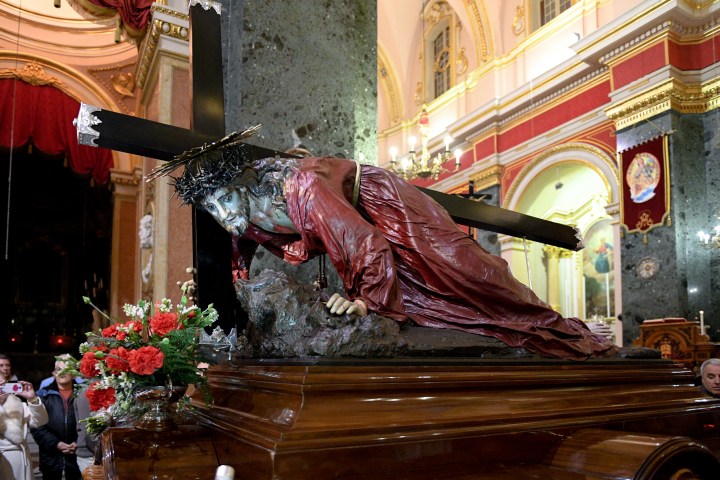
Enshrined in the Oratory of the Holy Crucifix, Christ the Redeemer is a source of inner peace to those from all walks of life who make their way to Senglea to pour out in front of Him their most intimate heartaches. During particular seasons, especially during Lent, many parishes organize penitential and prayer visits in front of this effigy, where in the silent moments of contemplation the faithful ask the Lord to help them, firmly convinced that their prayers are heard. The recorded testimonies of private miracles are innumerable: healing from terminal illness, cure of physical ailments, mending of relationships, and, most commonly, personal journeys of finding one’s way back to God. These numerous unseen graces were the reason why in 2016 the Oratory was chosen as one of the privileged venues for the Jubilee of Mercy. Other year-long moments of thanksgiving consist in the many presentations by parents of their newborn babies, asking for the compassionate Lord’s blessing and protection.
Between 2017 and 2018 the statue underwent a much-needed conservation and restoration intervention by Atelier del Restauro, which was accompanied by an in-depth analysis by the undersigned of newly-discovered documentary sources. These two projects resulted in a scholarly publication, titled Ir-Redentur: History, Art and Cult of the Miraculous Effigy of Christ the Redeemer at Senglea. This book sheds new light on the forgotten history of this effigy and giving details on the conservation process.
The Gozo Crucifix
Among the many Crucifixes venerated in the churches located in every town and village of the Maltese Islands, the one at the Capuchin church in Gozo features prominently due to its history and the devotion it inspires. This crucifix is intrinsically linked to the history of the Knights of St John in Malta. It is a 17th-century exquisite Sicilian work of art. Before the Holy Image reached Malta, it was preserved in a house that was destroyed by fire, but the crucifix miraculously remained intact.
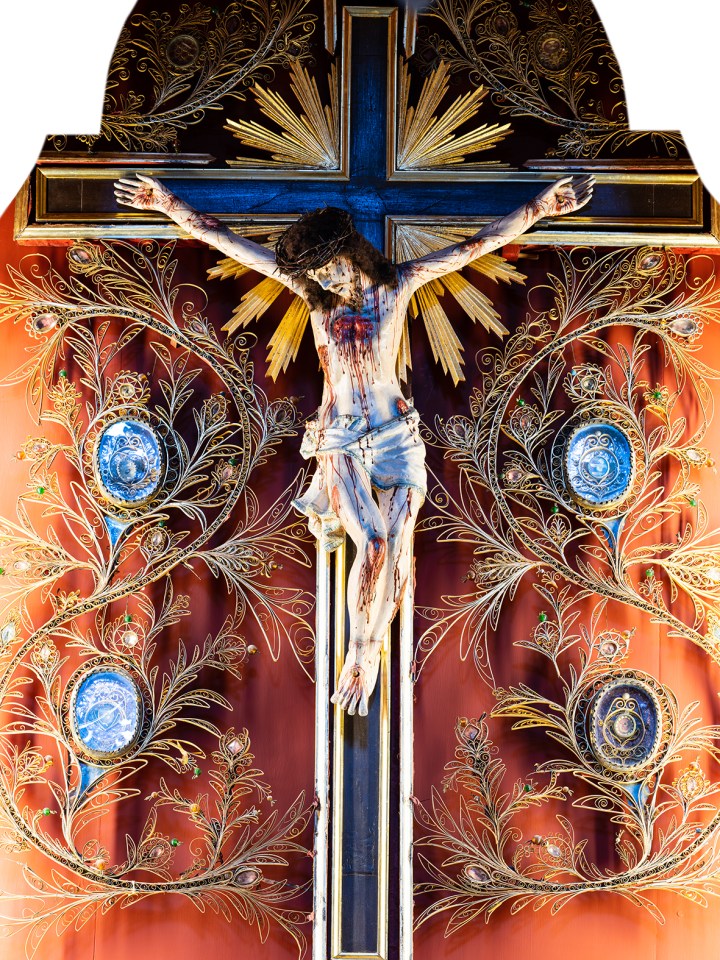
Later, while being transferred by sea, the boat was followed by an enemy vessel, and according to the captain’s report it was luckily salvaged. In 1736, a small rural chapel beneath the Gozo Citadel dedicated to Our Lady of Graces was entrusted to the Capuchin Order following their request to Bishop Alpheran to be granted a site wherein to build a friary.
In a letter, the Gozitan man-of-letters Canon Francesco Agius de Soldanis (1712-1770) wrote to a friend, he mentions both the Capuchin Chapel and the crucifix; the Canon describes the crucifix as one “of ordinary size, rather big, considered by all as one of the most precious objects owned by the beloved Capuchin Custody.” From this letter, one can conclude that the crucifix was donated to the Capuchins when they were building their church and friary. We also learn that this holy image was commissioned 40 years before the writing of de Soldanis’ letter to Ignatius Saverio Mifsud in 1747. The Agius de Soldanis letter is a treasure trove for all those who seek to know more about the Miraculous Crucifix. The Canon writes:
“O devout traveller, this image of our Crucified Savior that you are adoring, well known for its many miracles, was executed in Messina and hung on a wall on one of the houses. It was not consumed during a fire that devastated the entire building. It was then transferred to Syracuse, and was salvaged from an imminent shipwreck after the sailors’ vow …”
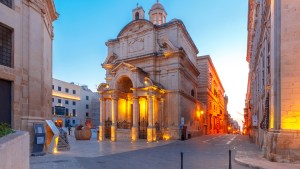
The artist conveyed a harsh and gory vision of the Redeemer’s body, as if he wanted to convey to the faithful the last moments of Jesus’ agony.The crucifix conforms in detail to the Death on the Cross as idealized by the Council of Trent’s Decrees on sacred Art. We do not see Jesus uttering his last words. We see only Christus morens with a pierced side, his suffering face and the violent sagging of a lifeless body. The blood gushing out of his wounds, reflect the medieval mystical writings of St. Bridget of Sweden. It is the prayer Anima Christi carved in wood. Although it lacks the qualities of Rubens’ painted crucifixes, characterized by Christ’s perfectly molded body, its spiritual dimension and sense of serenity transforms it into a highly devotional one, devoutly revered, through which the intercession of prayers could be answered and graces granted. The artist’s expression of Jesus’ suffering on the Cross epitomizes the Savior’s victory, and marks this fascinating holy image as an aesthetic presentation of the Christian faith. In 2017, the Gozo Crucifix was restored by the renowned firm of conservator-restorers Prevarti. It was the third restoration in 57 years. A book about this crucifix was also published in 2020. Its title is Crux Invicta.
The Kandja Crucifix, Cospicua
In the Collegiate Church of the old city of Cospicua we find what has become known as the Crucifix of Candia (Kandja in Maltese). The crucifix is very ancient and definitely goes back to at least the 16th century. Indeed, if particular characteristics of the crucifix are thoroughly analysed and compared to other crucifixes of the same type, it becomes evident that its origin is well into the medieval Lectio period, around the 12th and 13th centuries. The name ‘Candia’ brings to us the memory of the great Veneto-Turkish War of the 17th century, during which the two naval powers vied for the mastery of the Eastern Mediterranean. The prize of the war was the island of Crete, which had been a colony for almost five centuries. The Venetians lost the war and were forced to abandon Crete.
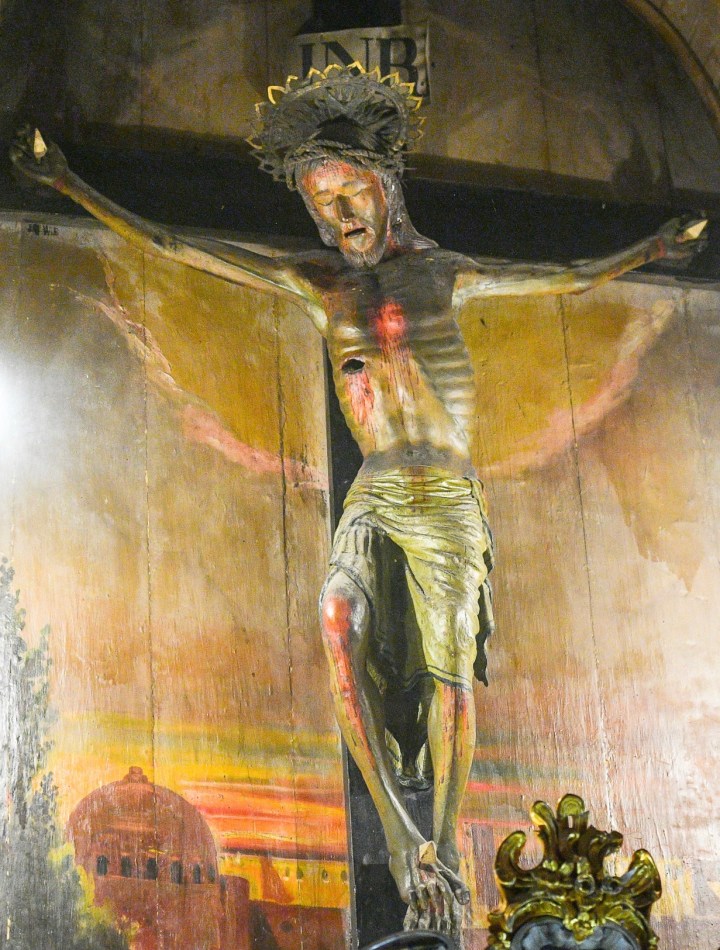
At the time the miraculous crucifix was in a Dominican church dedicated to St. Peter in the city of Candia. There is no doubt that the holy effigy had great spiritual value for this community of Catholics, probably Venetian. Indeed, from reports related to an apostolic visit (1670-1679) it transpires that in Candia it was already regarded as sacred and miraculous for over a hundred years.
The saga of the Cospicua Crucifix begins during the Venetian retreat, and makes a good topic for a historic novel, or even for an adventure movie as it is full of intrigue and adventure in a setting of power politics played by the powerful Dominican Order, the Maltese Church Hierarchy and the Collegiate Church of Cospicua’s ecclesiastical authorities.The Knights of Saint John had sent an expeditionary force to assist the Venetians in their struggle against their hereditary enemies, the Ottoman Turks. Among their expeditionary force were several Maltese mariners, one of whom was a Cospicuan, Gian Angelo Balzano. He was tasked by a Venetian Dominican friar to carry the crucifix to Venice. But instead, Gian Angelo decided it to donate it to the Confraternity of the Crucifix of Cospicua. The Dominicans to whom this Holy Icon belonged objected and appealed to the local Church authorities, and then, even to the Holy Inquisitor to return the crucifix to its rightful owners, the Dominican Order. After years of controversy and appeals and counter appeals, it had become evident that in the meantime in Cospicua the devotion to the crucifix spread like wildfire. So, in order not to disappoint the people of Cospicua, and to avoid trouble, it was decided to leave it with the first possessors, the Confraternity.
The Holy Icon has always been venerated with great devotion by the people, and one particular happening added to the fervor. During the Pentecost procession of 1674, the holy monstrance was being carried by the Secretary of the Inquisitor himself; as ranks of soldiers were saluting the procession by the firing of arms, one of them fired with live ammunition, but the shot avoided injuring anyone in the large crowd. This was taken as a miracle.
Make sure to visit the slideshow below to discover more details of these miraculous, exceptional images.
Acknowledgements and credits:
The Gozo Crucifix was written by Rev. Dr. Martin Micallef, Lecturer at the Faculty of Theolgy (University of Malta), and Chief Editor of Melita Theologica
TheTa’ Giezu Crucifix was written by Christian Attard and Fr. Noel Muscat ofm of the Archconfraternity of the Holy Cross, Valletta
TheSenglea Redeemer was written by Can. Dr. Jonathan Farrugia – Head of Department (Department of Church History, Patrology and Paleochristian Archeology – University of Malta)
References
Galea Scannura C. Il-Kurcifiss ta’ Kandja – Kif gie? Bormla. Holy Week 2002
Mercieca S. Il-Kurcifiss jew ahjar il-Kurcifissi ta’ Kandja fil-Knisja ta’ Bormla – Lectio Medjovali fit-Teologija tal-Passjoni ta’ Sidna Kristu. Centru 19 ta’ Novembru 1944 – Bormla. Holy Week 2009
Mercieca S. L-Kurcifiss Mirakuluz u l-Vero Ligneo prezzjuz ta’ Bormla: taghrif mehud miz-zjajjar pastorali tal-isqfijiet Astiria, Molina, Cocco Palmieri, Canaves u Gori Mancini(L-Ewwel Parti). Holy Week 2011
Mercieca S. Il-Kappella tal-Kurcifiss ta’ Kandja u r-Reliwija tas-Salib Mqaddes fiz-Zjajjar Pastorali tal-Isqof Alpheran De Bussan (It-Tieni Parti). Holy Week 2012
This content has been brought to you in partnership with the Malta Tourism Authority

